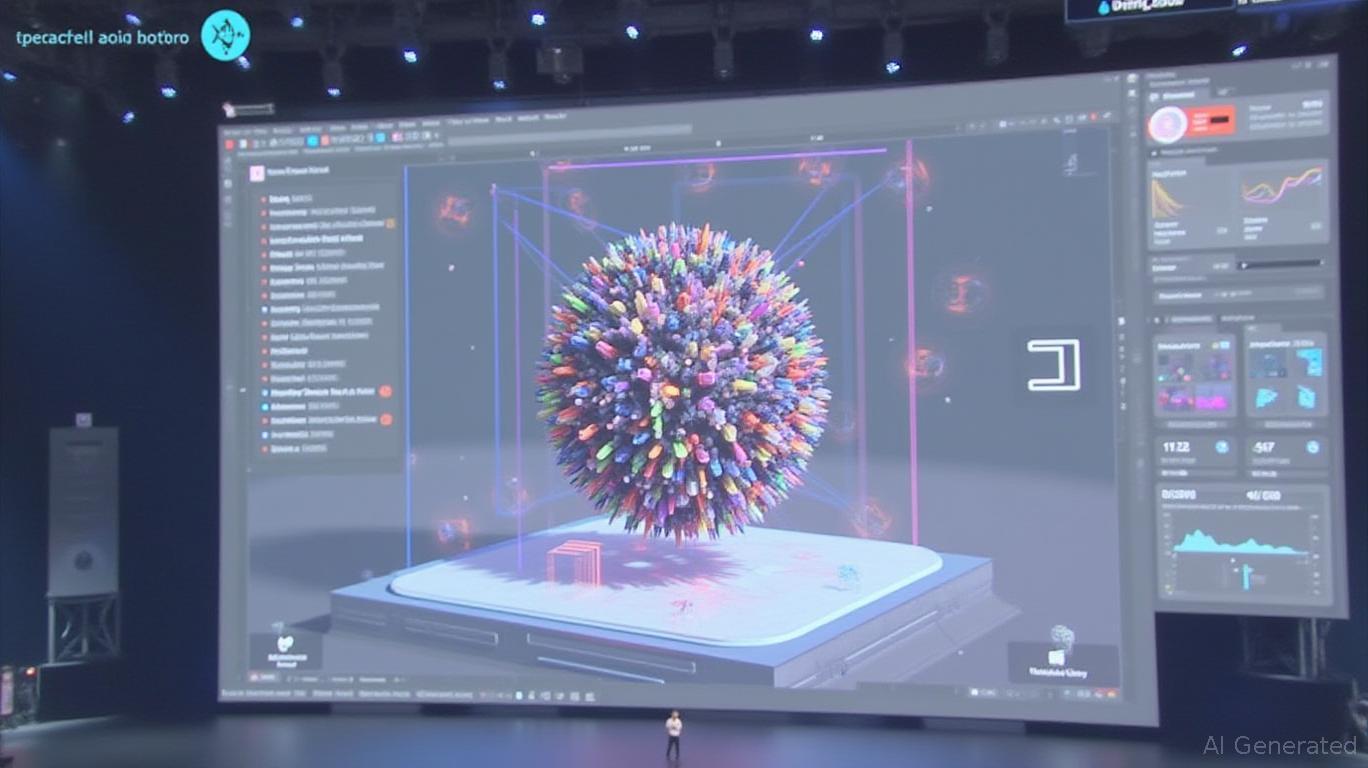Unity Software (U): Navigating Near-Term Headwinds to Capture Long-Term AR/VR Dominance
Unity Software Inc. (U) has emerged as a critical player in the real-time 3D (RT3D) software space, powering everything from blockbuster video games to cutting-edge AR/VR applications. Yet its recent Q1 2025 earnings report has sparked investor skepticism, with revenue declining 6% year-over-year to $435 million and Q2 guidance undershooting analyst expectations. Beneath the surface, however, lies a company strategically positioned to capitalize on secular trends in immersive technologies—a mispricing opportunity underscored by its Zacks Rank #1 (Strong Buy) despite recent downgrades. This analysis reconciles short-term execution risks with Unity's long-term moat and argues for a contrarian buy at current levels.
Near-Term Risks: A Necessary Portfolio Reset
Unity's Q1 results reflect intentional trade-offs as it shifts focus from legacy ad-tech businesses to high-margin tools like its Unity Vector AI platform and Unity 6 engine. Revenue declines in its Grow Solutions segment (down 4% to $285M) stem from winding down underperforming ad products, while Create Solutions subscription revenue—now 80% of the segment—grew double-digits organically. The Q2 guidance ($415–425M revenue, $70–75M EBITDA) accounts for this transition, but investors are penalizing shares for the short-term pain.

The near-term risks are real but manageable:
- Geopolitical Uncertainty: A significant portion of Grow operations are based in Israel, exposing
- Sector Cyclicality: The Internet-Software sector faces macroeconomic headwinds, including ad spend compression and high interest rates.
- Execution Risks: Scaling Vector and Unity 6 requires heavy R&D investment, which could temporarily pressure margins.
Yet these challenges are not existential. The company's $1.55 billion cash pile and improving EBITDA margins (19% in Q1 vs. 17% in 2024) provide a buffer, while its Q1 Adjusted EPS of $0.24 (vs. $0.11 estimates) signals operational resilience.
Long-Term Catalysts: The AR/VR Tipping Point
Unity's true opportunity lies in its foundational role in game development and AR/VR ecosystems. Consider these metrics:
- Unity 6 & Vector Momentum:
- 43% of active users have adopted Unity 6, which supports new AR/VR platforms like Meta Quest and Nintendo Switch 2.
- Vector's AI-driven ad network delivered a 15–20% lift in installs and in-app purchases in early trials, with advertiser spend accelerating as results materialize.
- Enterprise Diversification:
- Unity's tools are now used by companies like BMW (digital twins), Siemens (industrial simulations), and
- Automotive partnerships alone drove 10% of 2024 revenue, with further upside as metaverse adoption grows.
The AR/VR market is at an
. IDC forecasts global spending on immersive technologies to reach $94 billion by 2026, with gaming and enterprise solutions leading the charge. Unity's platform dominance—used by 90% of the top 1,000 game studios—ensures it captures outsized growth, even as competitors like and Epic Games scramble to catch up.Why the Zacks Rank #1 Makes Sense
Despite Q2 guidance misses and analyst downgrades, Zacks' Strong Buy rating reflects two critical factors:
1. Margin Expansion Potential:
- Vector's scalability and subscription-driven Create Solutions (now 80% of its segment) should drive EBITDA margins to 20–25% by 2026.
- Automation and cost discipline (Q1 operating cash flow rose to $13M from -$7M) are reducing structural inefficiencies.
- Mispriced Volatility:
- Unity's shares have underperformed the Nasdaq Internet Software index by 25% YTD, despite its industry leadership and $10 billion RT3D opportunity.
- A price-to-sales ratio of 2.5x versus peers' 4–5x suggests a valuation discount that overweights short-term noise.
Investment Thesis: Buy the Dip, Own the Future
The contrarian opportunity here is clear: Unity's near-term pain is temporary, while its long-term moat is durable. Investors should:
- Focus on structural trends: AR/VR adoption is accelerating, and Unity's platform advantages (Unity 6, Vector) are unmatched.
- Monitor execution milestones: Look for Vector's full monetization in Q3 and a rebound in Create Solutions growth as pricing initiatives take hold.
- Rebalance on dips: A pullback below $10/share (current price ~$12) would present a compelling entry point.
Final Call: Strong Buy at $12, 30% Upside by 2026
Unity Software (U) is a classic “value in volatility” story. While near-term earnings risks are valid, they are outweighed by its role as the operating system of immersive tech. With a Zacks Rank #1 and a valuation that ignores its $10 billion addressable market, now is the time to position for the AR/VR boom.
Risks to thesis: Further geopolitical instability, delayed Vector monetization, or a prolonged ad-market slump could prolong underperformance.
Investment recommendation: Buy U on dips below $12, targeting $15–16 by end-2026 as AR/VR adoption and margin expansion materialize.
This analysis assumes no material changes in macroeconomic conditions or geopolitical risks.

Comments
No comments yet